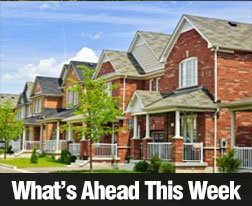What’s Ahead For Mortgage Rates This Week – November 16, 2015
 Last week’s scheduled economic news was sparse due to no scheduled releases on Monday and the Veterans Day Holiday on Wednesday. A report on job openings was released on Thursday along with regularly scheduled weekly reports on jobless claims and Freddie Mac’s report on mortgage rates.
Last week’s scheduled economic news was sparse due to no scheduled releases on Monday and the Veterans Day Holiday on Wednesday. A report on job openings was released on Thursday along with regularly scheduled weekly reports on jobless claims and Freddie Mac’s report on mortgage rates.
Mortgage Rates, Weekly Jobless Claims Rise
Mortgage rates rose last week according to Freddie Mac. The average rate for a 30-year fixed rate mortgage rose to 3.98 percent from last week’s reading of 3.87 percent. The average rate for a 15-year fixed rate mortgage rose to 3.20 percent from the prior week’s reading of 3.09 percent; the average rate for a 5/1 adjustable rate mortgage was also higher at an average of 3.03 percent as compared to the prior week’s average rate of 2.96 percent. Discount points were unchanged for all three types of mortgages at 0.60 percent for fixed rate mortgages and 0.40 for 5/1 adjustable rate mortgages.
New jobless claims rose last week to 276,000 claims filed against the expected reading of 268,000 new claims and the prior week’s reading of 276,000 new jobless claims filed. The Labor department reported 5.53 million job openings on September, which was the second highest reading since the inception of the job openings report in 2000.
The Labor Department also reported that the quits rate held steady at 1.90 percent for the sixth consecutive month. Fed Chair Janet Yellen has said that the Fed considers the quits rate an indicator of economic strength; if workers have enough confidence to quit their jobs for new jobs, this a strong economy. The quits rate has held steady for six months, which could signal to the Fed that the economy is not yet ready for a rise in interest rates that analysts expect to occur in December.
U.S. News recently cautioned that a combination of rising home prices and interest rates could quickly cool housing markets as first-time and moderate income buyers are priced out of the market and other would-be buyers find it difficult to qualify for the mortgages they need to finance home purchases. Recent hikes in mortgage rates are a likely response to the anticipated Fed rate hike in December.
What’s Ahead
Next week’s scheduled economic reports include the National Association of Home Builders Housing Market Index, Housing Starts and minutes from the most recent meeting of the Fed’s Federal Open Market Committee. The minutes may provide additional insight into how Fed policymakers are approaching the decision about raising the target federal funds rate.
 Starter homes are incredibly popular for young couples who plan to have a family in the future but don’t need a large place yet.
Starter homes are incredibly popular for young couples who plan to have a family in the future but don’t need a large place yet. If you’re considering applying for a reverse mortgage, you’ll want to ensure you understand certain critical factors. One such factor is the principal limit. The principal limit will have a strong influence on your finances, which is why you’ll need to ensure you know – before applying for your reverse mortgage – what your principal limit is.
If you’re considering applying for a reverse mortgage, you’ll want to ensure you understand certain critical factors. One such factor is the principal limit. The principal limit will have a strong influence on your finances, which is why you’ll need to ensure you know – before applying for your reverse mortgage – what your principal limit is.